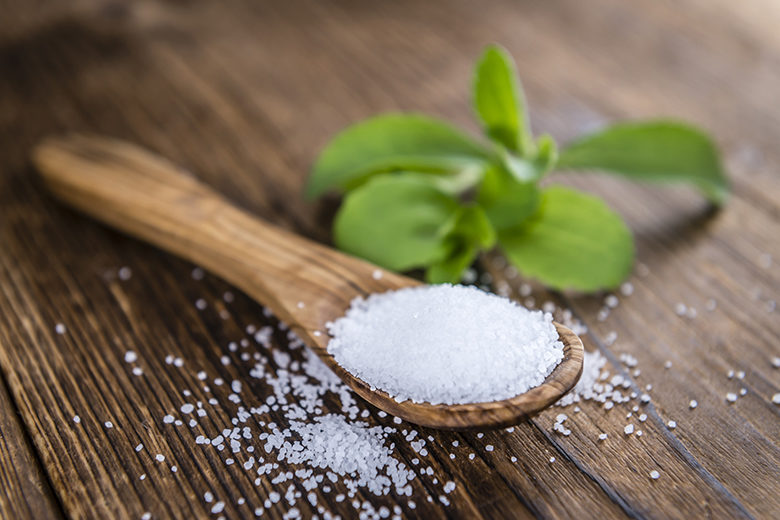
Stevia: What is it?
People usually think of stevia as the increasingly popular non-nutritive sweetener that is relatively new in the food industry. But actually, stevia is a genus of about 240 species, and only one of them is naturally sweet: Stevia rebaudiana Bertoni, also known as sweetleaf.
The stevia leaf contains two kinds of compounds: steviosids (200-300 times sweeter than sugar) and rebaudiosides (300-400 times sweeter than sugar). The compound that is being used as a tabletop sweetener or general-purpose sweetener in foods is called rebaudioside A. In 2008, the Food and Drug Administration approved rebaudioside A — purified from Stevia rebaudiana Bertoni — as a Generally Recognized As Safe (GRAS) substance due to the fact that there has been no evidence of any health risk associated with its consumption. However, the FDA has not approved the use of whole-leaf stevia or crude stevia extracts as a food additive. In the U.S., whole stevia leaves are sold as dietary supplements under the Dietary Supplement and Health Education Act of 1994.
Where it comes from and its history?
The stevia plant is native to South America, especially Paraguay, but also the northeast region of my country, Argentina.
As I said, stevia is now commonly used in the food industry, but its use dates back to Pre-Columbian times. The guaranies — indigenous people from this region of South America — used the plant as a sweetener for mate tea and other drinks for hundreds of years, but it didn’t attract the attention of Spanish colonizers at that time. It wasn’t until later, in 1884, that the guaranies presented stevia to Swedish scientist Moises Bertoni. With the collaboration of his friend, Ovidio Rebaudi, Bertoni performed the first studies on stevia and described and named its active compounds, rebaudiosides and steviosids. Since then, the stevia plant has been introduced in other countries like Japan, France, Spain, the U.S., Canada and China, one of the main producers of stevia today.
What are stevia’s benefits and risks?
Stevia has the same benefits other non-nutritive sweeteners have, which are that it contains no calories and has no effect on blood sugar, making it ideal for people losing weight or with diabetes. It’s also used as an herbal supplement — supported by low-quality studies that suggest health benefits such as management of hypertension and high blood sugar. (See conclusion from the Academy of Nutrition and Dietetics Evidence Analysis Library).
On the risk side, after years of research, there is no conclusive evidence about the potential dangers of stevia for human health. In animal trials, however, stevia was associated with an increase in infertility.
Bottom line
Remember that all sugar substitutes have some good and bad features, and that natural is not the same as safe (poisons are natural and can kill you!). Even natural sweeteners can be unhealthy, especially if used in excess. Rebaudioside A is safe when used, in moderation, as a non-nutritive sweetener.






